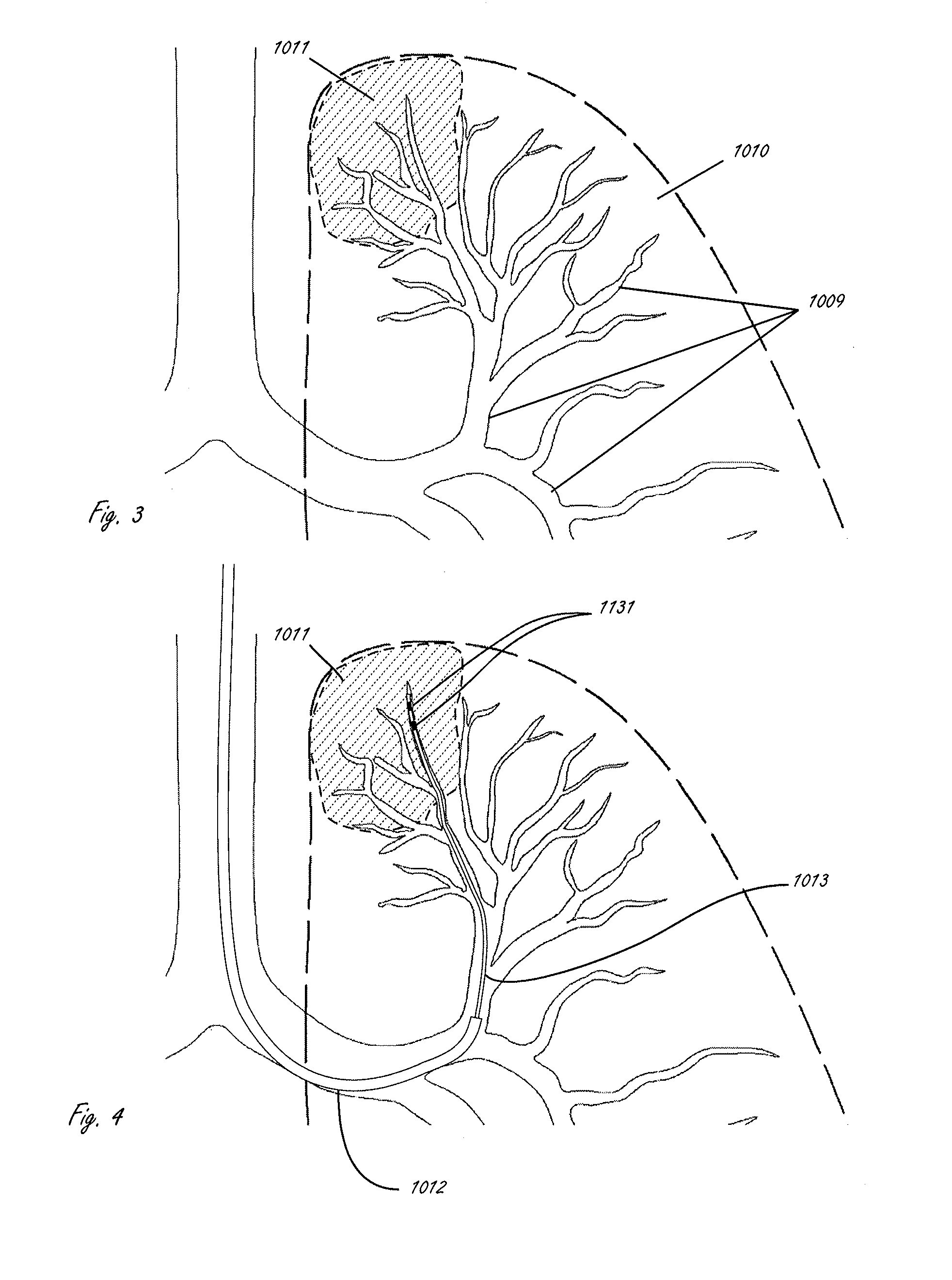Devices and methods for lung volume reduction
a technology of lung volume and devices, applied in the field of lung volume reduction devices and methods, can solve the problems of reducing the likelihood of the anchoring system causing an inflammatory response within the lung, and achieve the effect of reducing the volume of the lung, increasing or decreasing the distance between the proximal and distal anchors
- Summary
- Abstract
- Description
- Claims
- Application Information
AI Technical Summary
Benefits of technology
Problems solved by technology
Method used
Image
Examples
embodiment 1
[0205]2. The method of embodiment 1 where the section of diseased lung is emphysematous comprising hyperinflated tissue.
[0206]3. The method of embodiment 1 where quality is a measure of tissue compliance.
embodiment 3
[0207]4. The method of embodiment 3 where tissue compliance is determined using a medical imaging means prior to the implantation procedure.
[0208]5. The method of embodiment 3 where tissue compliance is determined using an endovascularly delivered ultrasonic means during the implantation procedure.
[0209]6. The method of embodiment 1 where quality is a measure of tissue density.
embodiment 6
[0210]7. The method of embodiment 6 where tissue density is determined using a medical imaging means prior to the implantation procedure.
PUM
 Login to View More
Login to View More Abstract
Description
Claims
Application Information
 Login to View More
Login to View More - R&D
- Intellectual Property
- Life Sciences
- Materials
- Tech Scout
- Unparalleled Data Quality
- Higher Quality Content
- 60% Fewer Hallucinations
Browse by: Latest US Patents, China's latest patents, Technical Efficacy Thesaurus, Application Domain, Technology Topic, Popular Technical Reports.
© 2025 PatSnap. All rights reserved.Legal|Privacy policy|Modern Slavery Act Transparency Statement|Sitemap|About US| Contact US: help@patsnap.com



